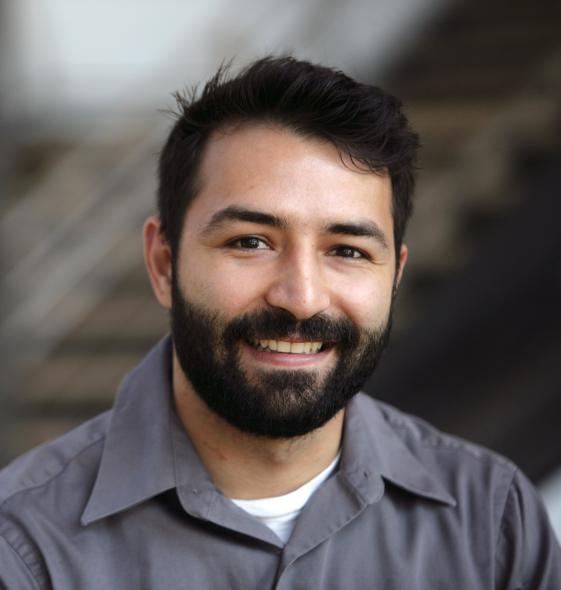
Disney-Pixar’s animated films are, in the words of Prospero, “such stuff as dreams are made on.” They’ve given us the “Toy Story” series, “Monsters, Inc.”, the sequel, “Monsters University” and the “Cars” movies. Just before Thanksgiving, Disney-Pixar will release “Coco,” a film that revolves around a young boy named Miguel, who challenges his family’s ban on music. I had a chance to speak with the co-director of “Coco,” Adrian Molina, who also co-wrote the script for the film.
For those who haven’t heard of “Coco”, why don’t you tell us, in your own words, what the movie is about.
Coco is a story about family. It’s a story about following your dream and seizing your moment, and it’s just a really cool film that’s based in this Mexican holiday of “The Day of the Dead” and our main character is Miguel. He’s this aspiring musician, and he lives in this family that because of past family history, doesn’t allow music and he’s looking for a way to find a mentor, find a role model, find a connection to someone who understands what’s deep inside him; and so it’s that journey of figuring out how do you balance the person you want to be with the things that are expected of you.
I watched “Coco” yesterday, and it is amazing! What was the inspiration behind it?
Lee Unkrich, the director, I think he’s always been really moved by the juxtaposition of this imagery, these beautiful skulls and skeletons dressed in beautiful colors and the vibrancy of it. It’s kind of intuitive sometimes to think of this idea of death and colors and vibrancy, but really the tradition of the Day of the Dead, it’s a day of celebration; a moment of active remembrance. It’s a time to tell stories and be present in the moment and be present in the memories of the people you love. And that became a fertile ground to tell a story about this kid who is learning about his family; learning where he comes from and learning about the stories of his ancestors that was the core of inspiration. It was really this idea of importance of remembrance, the importance of connecting to family that blossomed into the story that it is.
You’ve been with Disney-Pixar since 2007. How did you get started working with them?
I actually started in 2006. After my junior year in college, I got an internship at Pixar to do a story internship and it was like a twelve-week process where we would get assignments, and it would be my job to taken script pages and do drawings and try to express these written words as visual ideas and so I wanted to put my whole heart into it. Pixar has always been a place where if I could work there, it would be a dream come true. And so, I put my whole heart into it and fortunately, out of that internship they really responded to what I was doing and that felt super good. They said, “we want you to come work on “Toy Story 3” and so that was my very first job at Pixar as a story artist, was storyboarding on “Toy Story 3”, working with Lee Unkrich and Darla Anderson. And I couldn’t have imagined it happening so quickly and coming together so perfectly, but I’ve been enjoying it ever since.
Are any of the characters in “Coco” based on your own family and friends?
I wouldn’t say a one to one specifically, but there is a particular feeling about Miguel and his family that I wanted to reflect my family. I grew up in a multi-generational household so there were grandparents, parents and younger kids and to be able to have that family dynamic and the humor of it, and the drama of it, and the struggles of it all come out on screen was something that was important to me from a personal experience standpoint. It’s also great in terms of entertainment. I think there’s a lot of people who can relate to that type of thing, this idea that you love your family even though they drive you crazy.
So that was something I wanted to reflect a household that even when it has its drama, is full of love and is full of people who are looking out for you and want the best for you, even if they don’t express it in the healthiest of ways all the time. So, a lot of that came from personal experiences.
I noticed the love Miguel’s family had for him, and the concern as you said, based on their reaction to music. It was all out of concern for family. While he doesn’t not agree, I understood.
Exactly, and that was a really important thing in developing these characters because you wanted to give them a conflict, but you don’t want to hate his family. As storytellers, that’s a very tough challenge to navigate, to create a conflict that’s built not out of strife but out of concern and out of love and that’s kind of the hardest thing to deal with when the misunderstandings come from concern for each other, because how do you handle that? The interesting thing about Miguel is that he has trouble; it’s a conflict. He really wants to be his true self and he really wants to maintain this super valuable relationship and I feel that that’s such a juicy conflict to create a story out of and to develop to see how the characters grow in order to get what they want and need out of that relationship.
One thing I noticed was how beautiful the Land of the Dead looked. It was so perfect. I’m wondering how you came up with the design?
A lot of that came from earlier research we had done. Part of this process was going down to Mexico and just immersing ourselves into the culture, going to different places; small towns, big cities, different regions. So, the Land of the Dead is very much inspired by the verticality of Guanajuato and the colors and even to the point of a thematic standpoint, this is a film about family and generations built upon generations so the Land of the Dead, we wanted to have this feeling of history built upon history. So down at the very bottom, you have these Mesoamerican pyramids and that’s the base of everything kind of rising out of the water and then you’ve got post-Columbian architecture and modern architecture reaching up to the tops and it was just this really great visual metaphor, beautiful vertical metaphor for the connection, the idea that generations are built on top of one another and we all kind of stand on the shoulders of those who came before us.
Coco is in theaters, November 22nd. If you haven’t seen the trailer, check it out!

